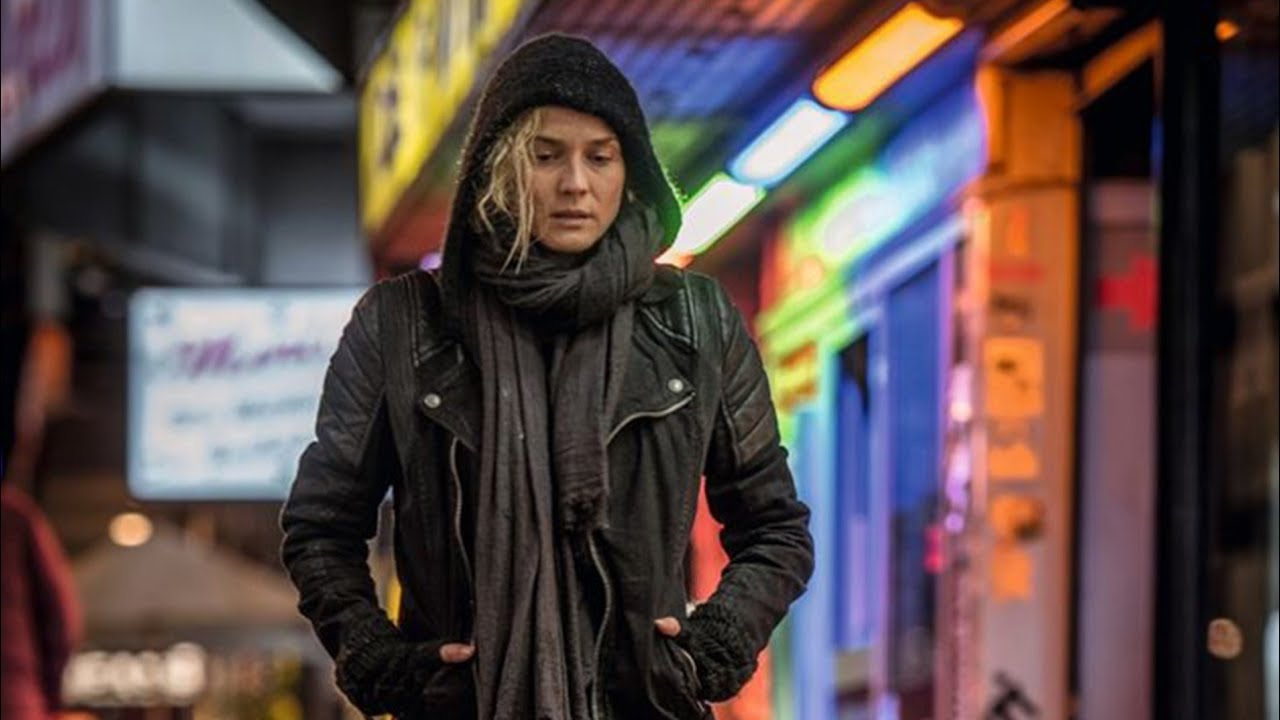
German-American actress Diane Kruger (Inglourious Basterds) gives a bold, bravura performance in writer-director Fatih Akins’ occasionally conventional but always compelling revenge-rattled new film, In the Fade. Broken down into three chapters (titled; Family, Justice, and the Sea), Akin’s film moves with ferocity from a heart-crushing tragedy to a gaunt, sweeping, teeth-bared revenge thriller with only a few minor missteps to tenderize the tough, and tormenting blows.
When we first meet Katja (Kruger) she’s getting married to Nuri Şekerci (Numan Acar), an affable Kurdish man just released from a five year prison stint for drug trafficking. It isn’t long before we see that the enamored couple have corrected their ways and started a family as we skip ahead a handful of years to find them blessed by an adorable six-year-old son Rocco (Rafael Santana).
But tragedy rears its heartless head when two neo-Nazi sympathizers, Edda (Hanna Hilsdorf) and her husband André Möller (Ulrich Friedrich Brandhoff) detonate a homemade nail bomb in front of the translation and tax office where Nuri works. Not only does the incendiary device level Nuri’s business, it claims his and Rocco’s lives, sending Katja into a grief-stricken spiral that comes terribly close to killing her via paralyzing heartbreak and self-harm.
It’s in these early scenes when In the Fade is at its most effective, forlorn, and heart-rending. Witnessing Katja in a haze of palpable and patent bereavement, it’s really no wonder that Kruger was deservedly bestowed the 2017 Cannes Film Festival Award for Best Actress.
Akin, aided by the expert lensing of his regular cinematographer Rainer Klausmann, details the surreal waking nightmare of Katja shopping for two very different sized coffins, the assortment of decorative, and novelty child-size caskets is shattering, as is the gut-punch of seeing Katja crying herself to sleep in Rocco’s tiny bunk bed.
Akin and Klausmann show no shortage of confidenty mutable camerawork and a wide range of stylistic flourishes from artful, overhead tableau, split-diopter intensities, slo-mo sequences, propulsive tracking shots, and more. Sure, they fringe on some overused exaggerations –– the stretch (where the camera dollies in while zooming out) always looks cool, but is cliché, particularly when it’s used when the judge makes an agonizing announcement.
In fact, the only real misstep the movie makes might just be that the middle part when, for a time, it becomes a courtroom procedural that, while gripping, is a little platitudinous and predictable.
The third act of In the Fade finds Katja in full-on animus, going measure for measure against the neo-Nazi perpetrators who ruined her life and murdered her husband and child. It’s a shrill ride that had me writhing in my seat, waiting not just for some fist-pumping reprisal, but also for sanctuary. The closing shot is a stunner, one that not only rattles, but also rewards in its rich symbolism, peculiar catharsis, and profound pain. Eerie, incensing, and well-timed, In the Fade ranks as one of Atkin’s best films. Don’t miss it.
Taste of Cinema Rating: 4 stars (out of 5)
Author Bio: Shane Scott-Travis is a film critic, screenwriter, comic book author/illustrator and cineaste. Currently residing in Vancouver, Canada, Shane can often be found at the cinema, the dog park, or off in a corner someplace, paraphrasing Groucho Marx. Follow Shane on Twitter @ShaneScottravis.